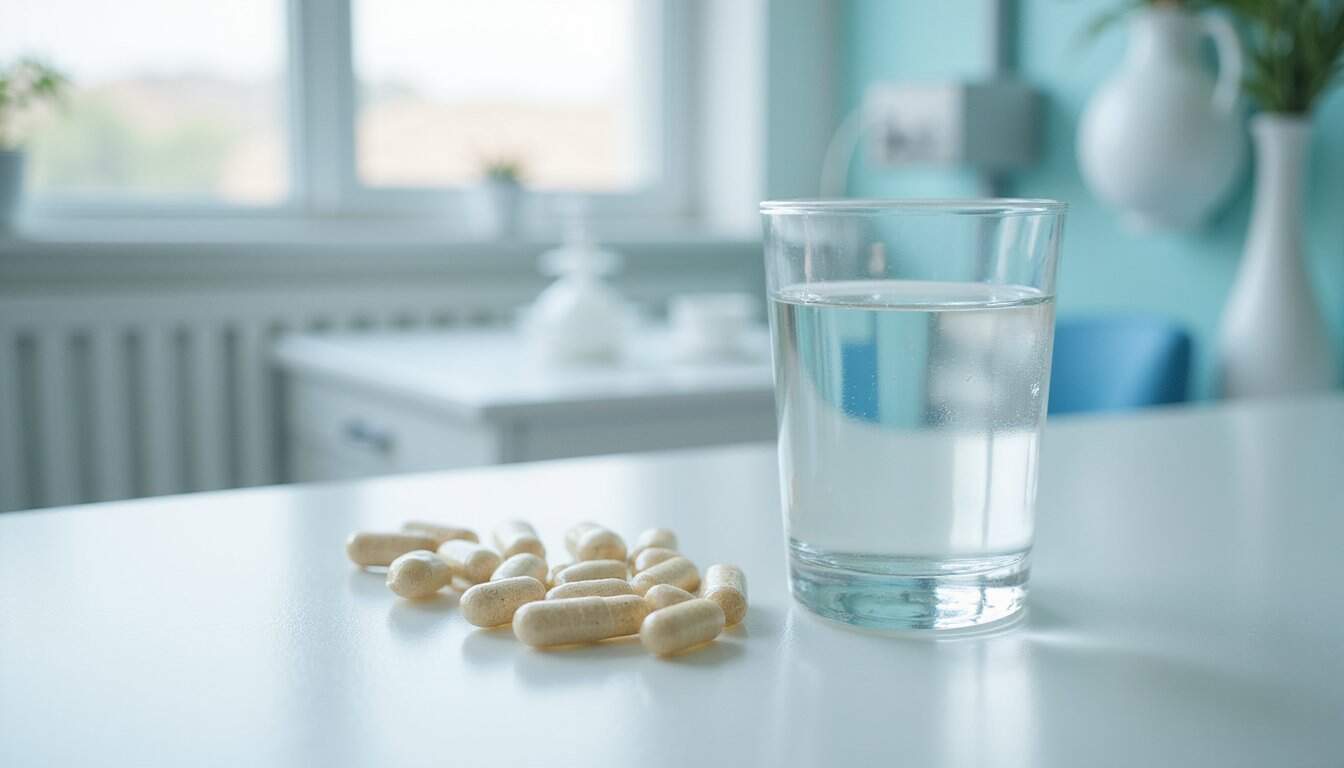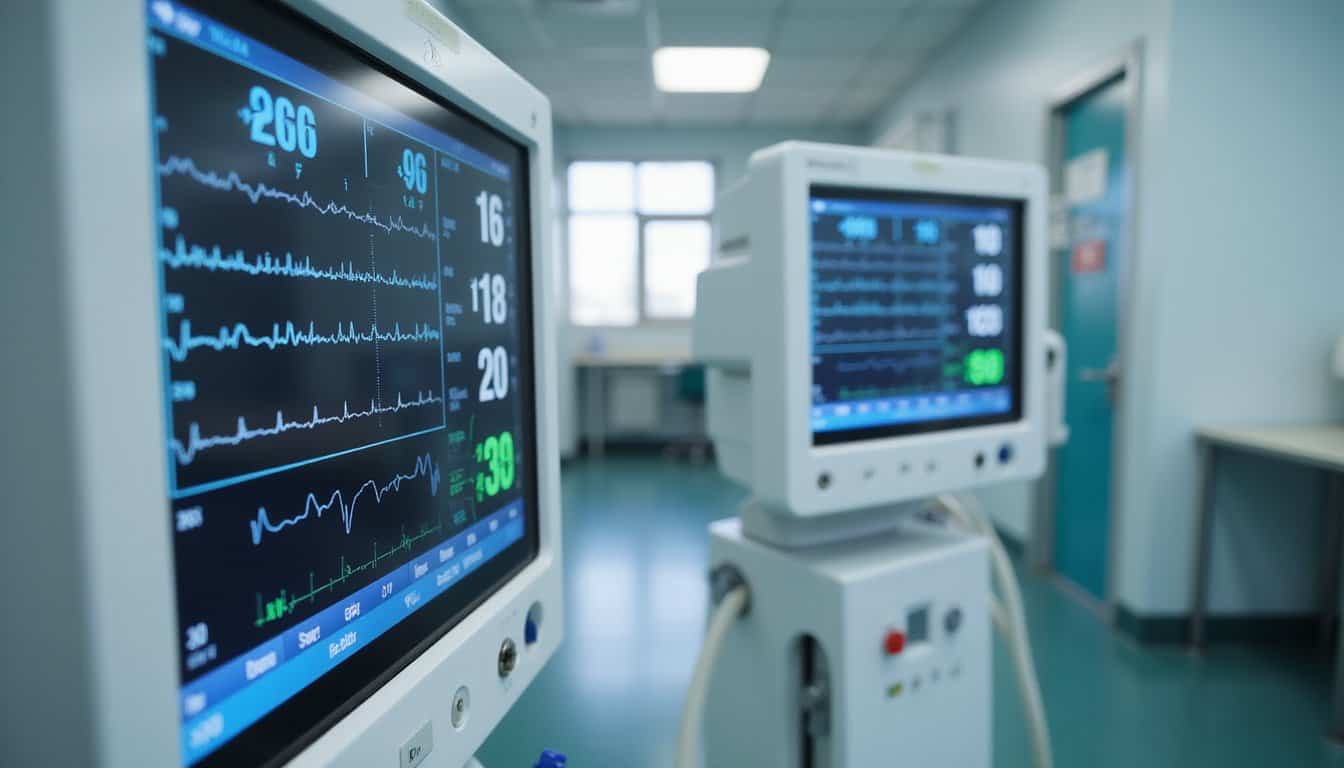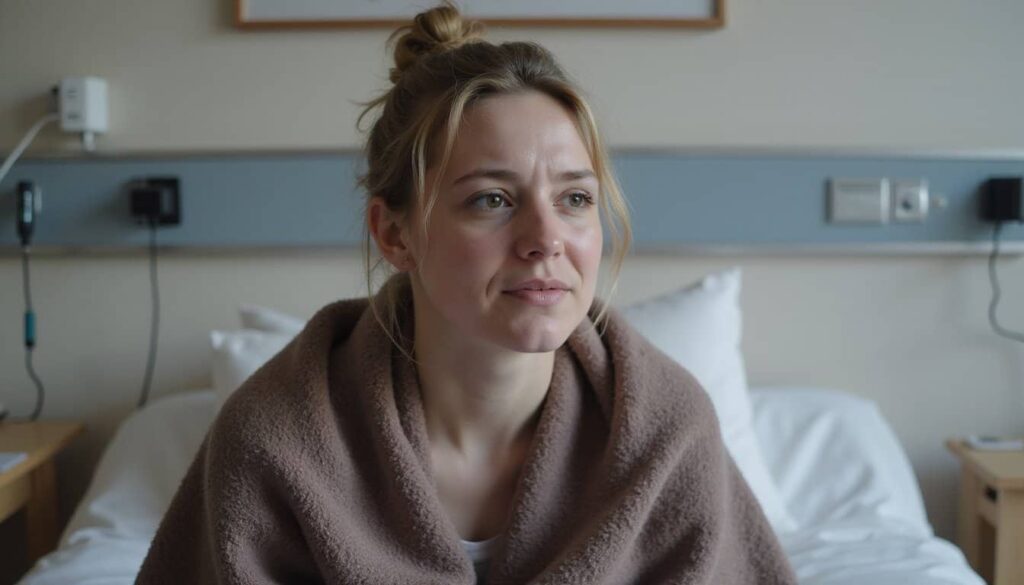Professional medical detox is essential for safely withdrawing from heroin under 24/7 supervision. You’ll typically experience withdrawal symptoms within 6-12 hours after your last use, with peak intensity occurring at 48-72 hours. The process includes medication-assisted treatment (MAT) with options like methadone or buprenorphine to manage symptoms, plus comfort medications for specific issues. While acute detox spans 5-7 days, your full recovery journey requires thorough aftercare and ongoing support for ideal success. Access to comprehensive heroin detox services can significantly enhance the detox experience, providing individuals with the tools and resources needed for a successful transition. Understanding the withdrawal timeline is equally important, as it prepares both individuals and their families for the emotional and physical challenges ahead. Knowing when symptoms may peak and subside helps manage expectations, while educational resources and support groups during this period foster resilience and strengthen motivation throughout recovery.
Understanding Available Medical Treatment Options

When seeking treatment for heroin addiction, several evidence-based medical options can effectively support the detoxification process. Medication-Assisted Treatment (MAT) forms the cornerstone of medically supervised detox, with medications like methadone, buprenorphine, and naltrexone helping to manage withdrawal symptoms and reduce cravings. These treatments can be administered in both inpatient rehab and outpatient care settings under 24/7 medical support. Most patients experience peak withdrawal symptoms within the first three days of detox. Behavioral therapy plays a vital role in addressing underlying trauma and building new coping mechanisms during treatment.
You’ll receive comfort medications to address specific symptoms, including anti-nausea drugs, pain relievers, and supplements to maintain your health during withdrawal. Professional supervision guarantees proper dosing and monitoring of your essential signs while preventing complications. Your treatment team will develop a continuity of care plan that extends beyond detox, incorporating relapse prevention strategies and ongoing support to maintain your recovery journey. For optimal safety and protection, treatment facilities employ security protocols to safeguard patient information and ensure confidential care.
Duration and Phases of the Detoxification Journey
Building upon the medical treatment foundation, understanding the distinct phases of heroin detoxification helps set realistic expectations for your recovery timeline. The process typically spans several weeks, with each phase presenting unique challenges requiring ongoing support and medical supervision. Medical staff closely monitor patients for enlarged pupils and other physical symptoms during initial assessment. Professional supervision ensures withdrawal symptoms are carefully managed through medical interventions.
- Acute withdrawal phase begins 6-12 hours after last use, bringing flu-like symptoms and emotional distress
- Peak withdrawal phase occurs at 48-72 hours, when you’ll experience the most intense physical and psychological symptoms
- Subacute withdrawal phase follows as symptoms subside, usually days 3-7, though sleep issues may persist
- Protracted withdrawal phase can extend weeks or months, requiring continued support for PAWS symptoms
Your individual experience through medically supervised detox will vary based on usage history and personal factors, but maintaining focus on your recovery goals helps navigate each phase successfully. Seeking professional assistance is essential since relapse rates can reach up to 60% when attempting detox without proper medical supervision.
Key Safety Considerations During Detox

During heroin detoxification, you’ll require continuous medical monitoring of your essential signs and withdrawal symptoms by trained healthcare professionals who can quickly identify and address any emerging complications. Your detox process must occur in a properly equipped medical facility with 24/7 clinical supervision to guarantee immediate response to potential risks like cardiac events, respiratory depression, or severe psychiatric symptoms. Advanced security measures are implemented to protect patient data and medical records throughout the treatment process. Healthcare teams utilize the Clinical Opioid Withdrawal Scale to accurately assess and track withdrawal severity throughout treatment. You’ll need carefully managed medication protocols and ongoing assessment of both physical and psychological symptoms to maintain safety throughout the withdrawal journey. Traditional medical detox provides a safer alternative compared to rapid detox methods, which have been associated with a 49% increase in emergency room visits.
Medical Monitoring Requirements
Medical monitoring during heroin detox requires thorough 24/7 supervision by qualified healthcare professionals to guarantee patient safety and successful withdrawal management. A multidisciplinary team performs extensive medical assessments, continuously evaluates your condition using withdrawal severity scales, and maintains secure medication storage protocols throughout your detox journey. Comprehensive psychosocial screening procedures are implemented to assess mental health status and support needs during the withdrawal process. Patients are placed in a calm environment separated from those who have completed withdrawal to minimize anxiety and stress. Vital signs are checked regularly to monitor for dangerous complications like elevated blood pressure that can arise during withdrawal.
- Your crucial signs, hydration status, and mental state undergo constant monitoring to detect any complications requiring immediate intervention
- Healthcare staff conduct regular psychiatric assessments to identify and address emerging psychological issues or suicidal ideation
- Medical teams use specialized withdrawal scales to adjust medication dosing and support based on your symptoms
- Safety management protocols guarantee proper medication administration, controlled visitation, and immediate response to medical emergencies during your 24-hour medical monitoring period
Preventing Withdrawal Complications
Successful heroin detox requires implementing strict safety protocols to prevent potentially dangerous withdrawal complications. Through proper symptom management and therapeutic support, you’ll receive tailored interventions addressing both physical and psychological challenges. Professional guidance guarantees proper hydration and nutrition monitoring while managing severe symptoms with appropriate medications. Medical staff can utilize clinical opiate withdrawal scales to quantify and track your symptoms objectively. Medical professionals focus heavily on managing acute symptoms since opioid agonist therapy provides the most effective relief during early withdrawal phases.
Your safety depends on careful medication protocols, especially when treating co-occurring disorders. You’ll need a consistent assessment of withdrawal triggers and emotional stabilization to prevent relapse. Medical staff will closely monitor your crucial signs, adjust treatments as needed, and respond quickly to any concerning symptoms. Since withdrawal symptoms typically begin within 12 hours after stopping heroin use, immediate medical supervision is crucial. The focus remains on thorough care, from managing immediate physical discomfort to providing the psychological support essential for long-term recovery success. Relapse prevention strategies, including ongoing therapeutic support, help safeguard your progress through detox and beyond.
Managing Withdrawal Symptoms Effectively
During your heroin withdrawal, you’ll receive evidence-based medications like methadone or buprenorphine to reduce cravings, while antiemetics and antidiarrheal medications target specific physical symptoms. You’ll benefit from 24/7 medical monitoring that includes regular crucial sign checks, IV fluid administration when needed, and immediate intervention for any complications that arise. Professional staff will continuously assess your comfort level and adjust your treatment protocol, ensuring both your safety and maximum symptom relief throughout the detoxification process. Therapeutic techniques like mindfulness and relaxation can provide additional comfort and stress relief during your detox journey.
Medication Options During Withdrawal
To effectively manage heroin withdrawal symptoms, healthcare providers can utilize several proven medication options that greatly reduce discomfort and improve treatment outcomes. During detoxification, you’ll receive carefully monitored medication-assisted therapy in a safe environment with extensive clinical support.
- Methadone helps alleviate withdrawal symptoms and cravings through regulated daily dosing at specialized outpatient centers
- Buprenorphine (often combined with naloxone) offers flexible treatment options with a lower risk of overdose due to its ceiling effect
- Supportive medications like clonidine or lofexidine can address specific physical symptoms while reducing overall discomfort
- Naltrexone serves as an effective relapse prevention tool after completing initial detox by blocking heroin’s effects
These evidence-based treatments, combined with supportive therapy, greatly increase your chances of successful long-term recovery while minimizing withdrawal difficulties.
Physical Symptom Relief Strategies
Managing physical withdrawal symptoms effectively requires a detailed approach that combines multiple evidence-based relief strategies. You’ll need to focus on proper hydration and electrolyte replacement to combat fluid losses from sweating and gastrointestinal distress. Implement comfort measures like warm baths, heating pads, and loose clothing to ease muscle aches and regulate body temperature. For gastrointestinal relief, start with clear liquids before gradually introducing bland foods, while avoiding irritants like caffeine and spicy foods.
Your detox foundation should include therapeutic care and personalized treatment plans that address both physical and psychological symptoms. You’ll benefit from joining a recovery community that provides ongoing support, while maintaining a structured environment with proper rest periods and symptom management techniques. This extensive approach guarantees you’re addressing withdrawal challenges from multiple angles.
Professional Monitoring Protocols
Professional monitoring protocols build upon physical symptom management through systematic observation and assessment frameworks. In a professional setting, you’ll receive continuous monitoring every 4-6 hours during the first critical week, with healthcare professionals using the Clinical Opiate Withdrawal Score (COWS) to measure withdrawal severity. Your individualized care plan considers both medical treatments and psychosocial factors, guaranteeing thorough patient assessment and safety.
- Clinical staff conduct regular essential sign checks and use validated assessment tools to track your withdrawal progression
- Monitoring responsibilities follow strict protocols, with immediate escalation of care when needed
- Your self-reported symptoms trigger expedited evaluations and treatment adjustments
- Healthcare teams maintain detailed documentation of your progress, adapting protocols based on individual response
These systematic monitoring approaches help guarantee safe, effective detox while minimizing complications and optimizing recovery outcomes.
Benefits of Medication-Assisted Treatment (MAT)
Three FDA-approved medications form the foundation of Medication-Assisted Treatment (MAT), offering considerable benefits for individuals recovering from heroin addiction. MAT with methadone reduces overdoses by 10.7%, while buprenorphine achieves a 22% reduction. When combined with psychotherapy and proper medication management, these interventions can decrease overdose risks by up to 31.4%.
You’ll find that MAT markedly improves retention in treatment through safe tapering strategies and thorough withdrawal management. The medications work by binding to the same brain receptors as heroin but with less euphoria and reduced cravings. For opioid use disorder, substance involvement can be effectively managed as buprenorphine partially activates receptors while blocking overdose risk, and methadone’s longer-acting properties help minimize withdrawal intensity. This evidence-based approach translates to considerable lifetime cost savings and improved recovery outcomes.
Long-Term Recovery and Aftercare Strategies

Successful long-term recovery from heroin addiction requires a thorough aftercare strategy that extends well beyond the initial detox and treatment phases. You’ll need to focus on continuing care through multiple evidence-based approaches that strengthen your recovery commitment and minimize relapse risks. Effective aftercare planning includes dual diagnosis treatment to address psychological distress and structured support systems to maintain sobriety.
- Regular participation in support groups and therapy sessions reinforces coping skills and accountability
- Shifting to sober living arrangements provides a stable, drug-free environment essential for early recovery
- Building strong social connections outside drug-using circles greatly improves long-term outcomes
- Engaging in ongoing relapse prevention training helps you identify triggers and develop healthy responses
Frequently Asked Questions
Can I Continue Working or Attending School During Outpatient Heroin Detox?
You can continue working or attending school during outpatient heroin detox if you have a stable home environment and reliable transportation. Programs offer flexible scheduling through evenings and weekends to accommodate your commitments. However, you’ll need to dedicate 9-15 hours weekly for therapy sessions, and you may require schedule adjustments during intense withdrawal periods. Your success depends on maintaining both treatment adherence and external responsibilities.
What Percentage of People Successfully Complete Heroin Detox on Their First Attempt?
Research shows that only 31% of people successfully complete heroin detox on their first attempt. You’ll face notably lower success rates with heroin compared to prescription opioid detox. Your chances decrease further if you’re under 30 or using concurrent stimulants. To improve your odds, you’ll want to pursue medication-assisted treatment (MAT) alongside detox, as attempting detox alone puts you at high risk for relapse without proper medical support.
How Does Insurance Typically Cover Different Heroin Detox Treatment Options?
Your insurance will typically cover medically supervised heroin detox as an essential health benefit, though coverage varies by plan. You’ll likely have access to inpatient detox, outpatient programs, and medication-assisted treatment, but you’ll need preauthorization. Most plans require you to meet your deductible and pay copays. Using in-network providers maximizes your coverage, while out-of-network treatment can greatly increase your out-of-pocket costs.
Are There Specific Dietary Recommendations or Restrictions During Heroin Detox?
During heroin detox, you’ll need to focus on nutrient-dense foods to support your body’s healing. Choose plenty of fresh fruits, vegetables, and lean proteins while avoiding processed foods and refined sugars. You should drink at least 8-12 glasses of water daily to aid toxin elimination. Include liver-supporting foods like broccoli, kale, and artichokes. Don’t consume caffeine or alcohol, as they can worsen withdrawal symptoms and dehydration.
Can Family Members Stay With Patients During Inpatient Heroin Detox?
No, you won’t be able to have family members stay with you during inpatient heroin detox. Treatment centers enforce a blackout period of 3-14 days where they restrict all visits to guarantee your medical safety and uninterrupted care during acute withdrawal. While you can’t have in-person family contact, staff will keep your family updated on your progress through scheduled phone calls or virtual check-ins, and visits may resume after the initial detox phase.










